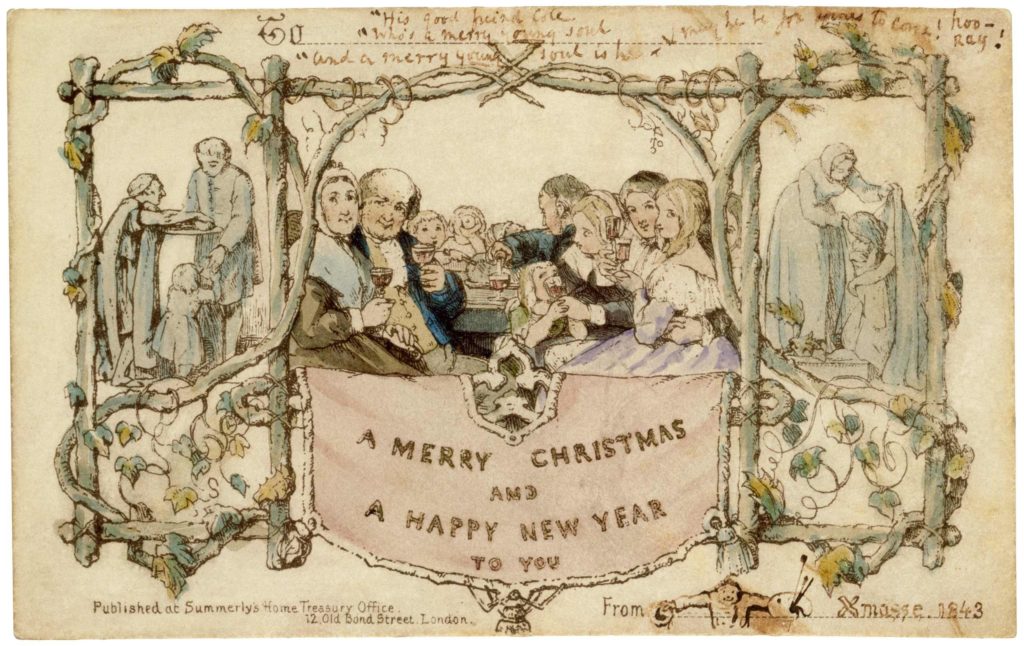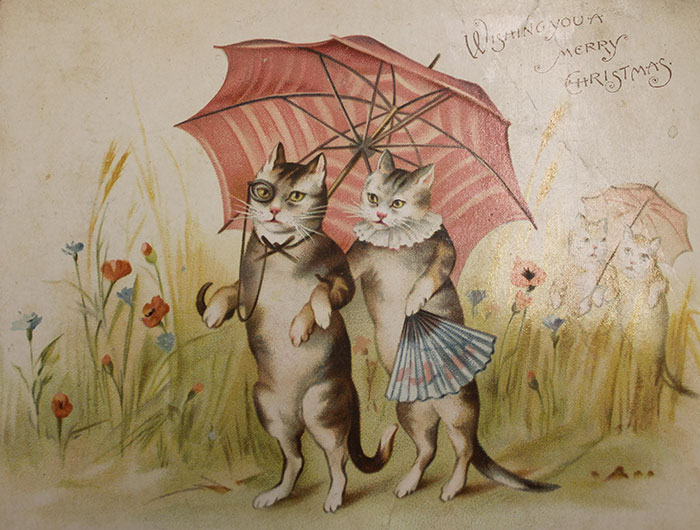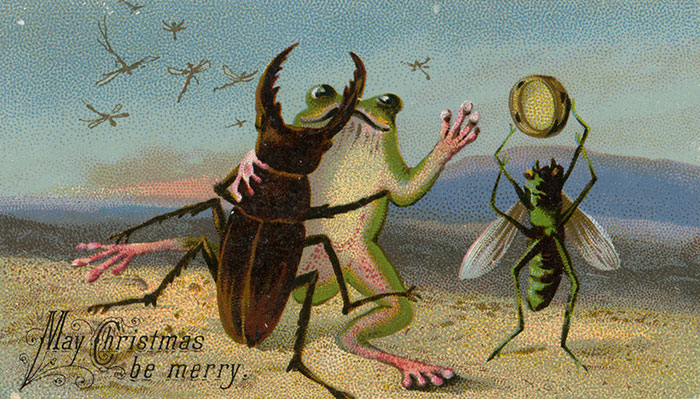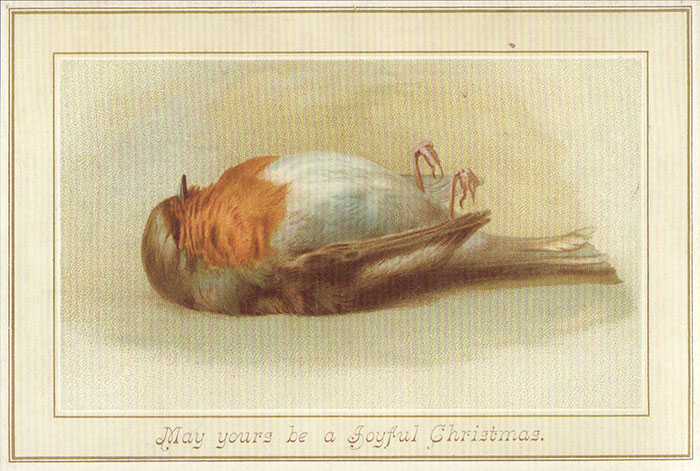Early versions of Christmas Cards were first created in Victorian England in the year 1843. These cards were simple and featured a family scene or religious imagery. They were often sent to loved ones as a way to wish them Seasons Greetings. So what did Victorian Christmas cards look like? And when did the tradition take off? Well, let’s take a look!
The First Card
John Callcott Horsley is known to be the first illustrator of a Christmas card, which was commissioned on May 1st, 1843. The commission was for Sir Henry Cole, a civil servant and inventor who wanted a quick way to respond to the numerous Christmas letters he received.
The first card depicted a family gathering, raising a toast, with scenes of charity on either side. This design was somewhat controversial at the time because it included a child drinking wine.

The Start Of A Christmas Tradition
The Victorian tradition of Christmas cards started off changing a lot. The first batch of cards illustrated involved families sitting together around a fire and raising a toast to the recipient of the card. There wasn’t much call for these cards, however, as some people found the message of the picture to be shrewd.
There was also a lack of winter imagery, such as snowy scenes, or winter animals. Instead, people preferred to send cards that included pictures of the coming springtime, such as flowers, fields, as well as fairies, and other fantasy creatures. These cards were very well received and helped to popularise the practice of sending and receiving cards.
As the tradition grew, so did the variety of cards. They ranged from simple and elegant designs to elaborate creations. Some used lace, ribbons, and even mechanical parts that allowed parts of the card to move.
Royal Christmas Cards
Queen Victoria herself began sending out Royal Christmas cards every year. These cards showed important events from the royal family’s life the previous year. She began the practice in the 1840s, so it didn’t take long for sending Christmas cards to be a runaway success in the Victorian era.
From here the images started to get more humorous, and sentimental. The Christmas card was becoming a diverse range of items that were shared, not just across the country, but the world too.
Victorian Christmas cards have become something of great interest in the last few years as people have found their images to be funny or strange. Some of these Christmas cards from the era depicted a group of frogs dancing, a mouse riding a lobster, Santa Claus boiling children, and a frog and a stag beetle slow dancing.



The Penny Post And It’s Impact On Christmas Cards
At the beginning of Christmas card traditions, it was both difficult and expensive to send them. That was until the Penny Post reform. The Penny Post was introduced in the United Kingdom in 1840 by Sir Rowland Hill. This involved the introduction of a uniform rate of one penny for postage, regardless of the distance the letter had to travel within the UK. This was a welcome change from the previous system.
Until the Penny Post the cost of sending mail was based on both the distance and the number of sheets of paper used.
Another important aspect of the Penny Post was the introduction of the prepaid postage stamp. The first of which was the famous ‘Penny Black.’ This stamp allowed letters up to half an ounce to be sent at the rate of one penny. Stamps simplified the process of sending mail and this had a knock on effect on sending Christmas cards. It was now much more accessible to a greater portion of the general public.
Christmas Card Facts
- Postmen in Victorian England were popularly called “robins” because their uniforms were red.
- In the nineteenth century, the British Post Office used to deliver cards on Christmas morning.
- The first Christmas postage stamp was released in Canada in 1898.
- The popularity of Christmas cards was boosted by the British postal system’s introduction of the ‘Penny Post’.
- The tradition of sending Christmas cards spread from Britain to the United States Canada and other parts of the world. Becoming a staple of Christmas celebrations globally.
- The messages in Victorian Christmas cards were often sentimental and poetic
- Victorian Christmas cards are now highly collectible. Their intricate designs and the fact that they were often handmade make them valuable and sought after by collectors.